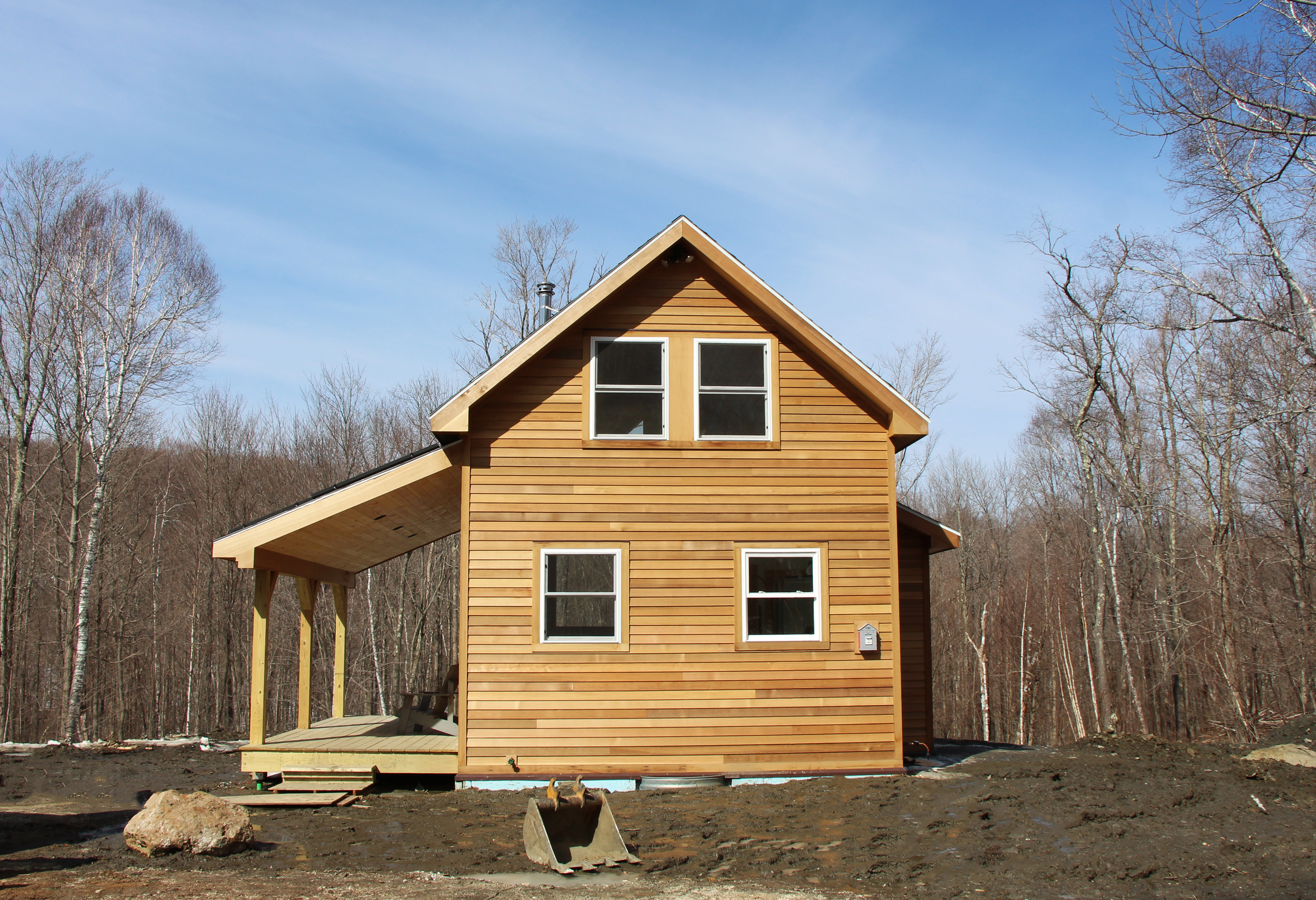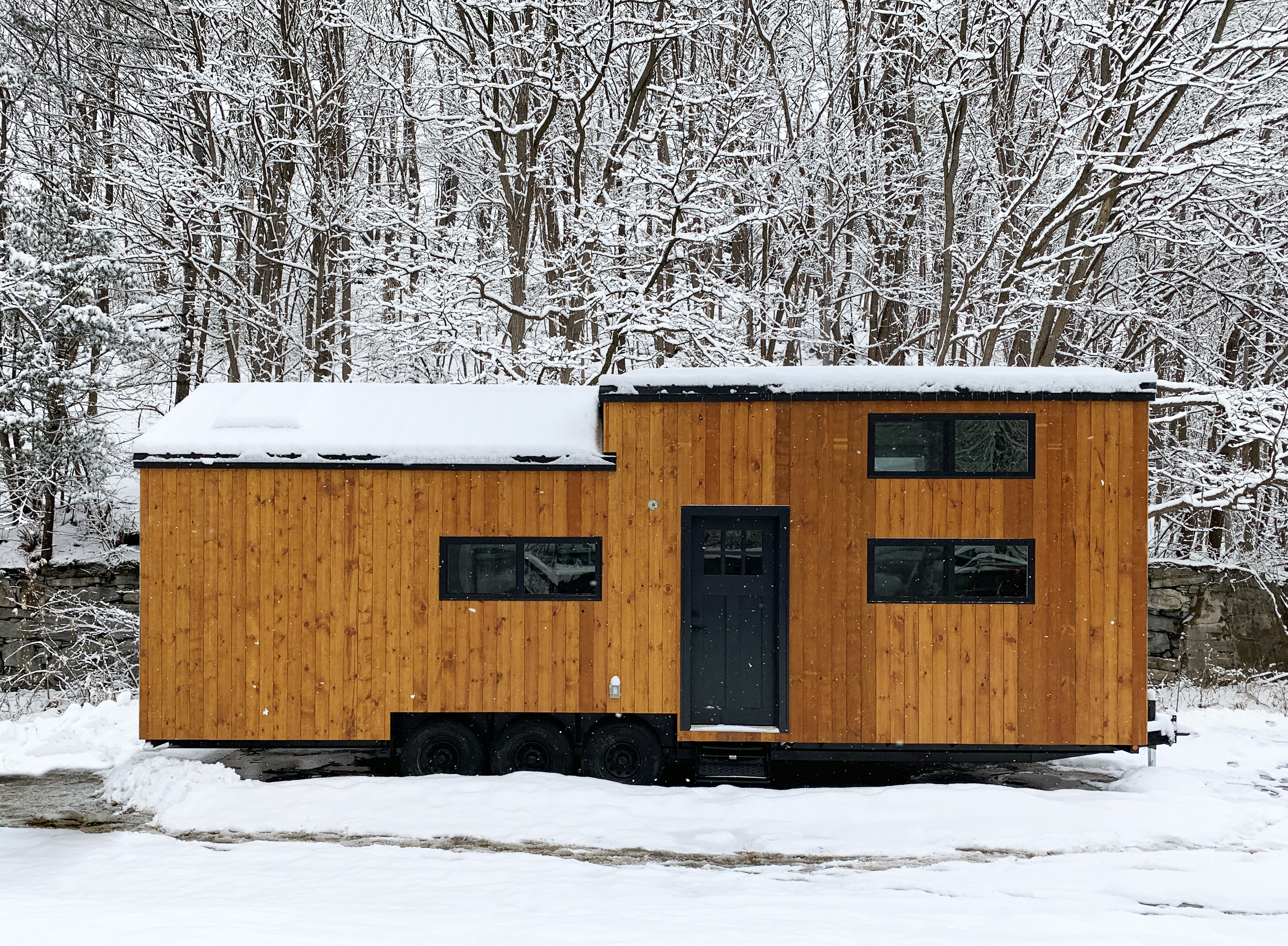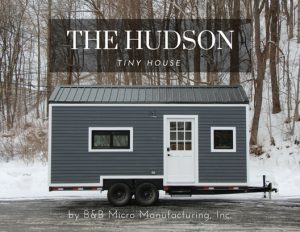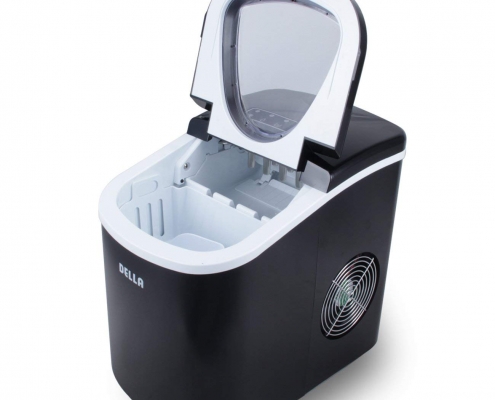Posts
Sustainability
/in Sustainability /by Savannah DodgeWhat is sustainability? How does it affect me? What does it have to do with tiny living?
Ram Trucks Films Commercial Featuring B&B Tiny Houses
/in Features /by Rick Porco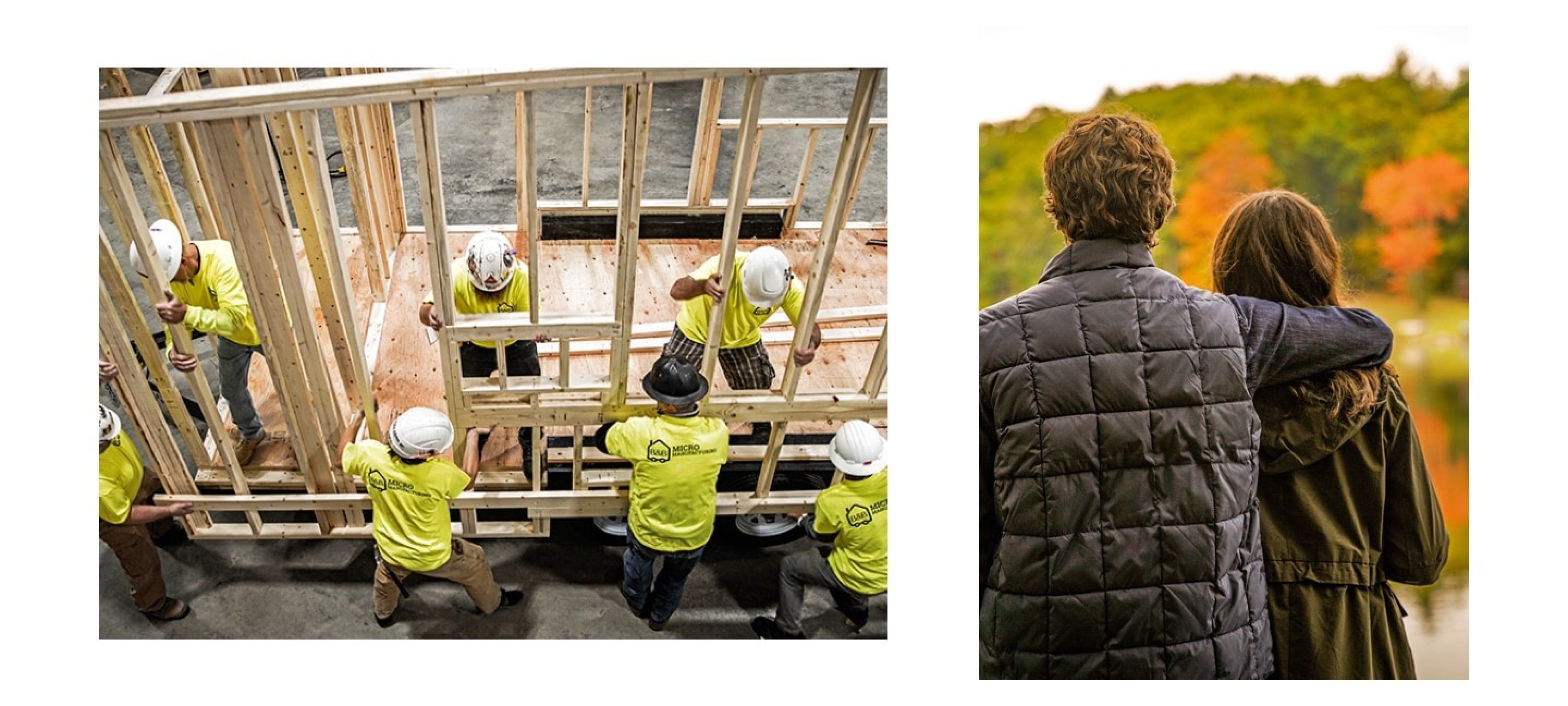
Photos: Ram Trucks https://www.ramtrucks.com/ram-life/outdoors/tinyhouse.html
Ram Trucks has just released a commercial featuring how easily their trucks can hitch and tow tiny houses. In the commercial, a woman and her husband visit the B&B Micro Manufacturing factory where our craftspeople build a tiny house on wheels for them. Later, they pick up their tiny house with their Ram truck and tow it to a campground where they relax under the stars.
Filming the commercial on-location at our tiny house factory in Adams, Massachusetts took two days (plus more time filming in the other locations) with a crew of about 30 people. We are thrilled to have our factory, builders, and houses showcased by Ram.
To see more content from Ram Trucks on this commercial, visit https://www.ramtrucks.com/ram-life/outdoors/tinyhouse.html.
Watch the video here:
Tiny House Appendix Q Adopted in New York State, Considered in New Hampshire and Connecticut
/in Appendix Q /by Rick PorcoGreat news for Tiny Houses in the Northeast!
- Appendix Q, also known as the Tiny House Appendix, has been adopted in New York State and will become law in early 2020.
- New Hampshire and Connecticut are both considering adopting the Appendix into their state building codes.
- Maine and Massachusetts have already adopted Appendix Q into their building codes, as well as at least five other states not in the northeast.
How can you support the adoption of the Tiny House Appendix in New Hampshire and Connecticut?
If you live in New Hampshire, please email the chair of the Tiny House Study Committee, State Rep Dave Testerman at dave@sanbornhall.net to express your support for the adoption of Appendix Q for tiny houses on foundations.
The public comment period for Connecticut residents is not open yet. When it opens up, this post will be updated with the contact info.
The following information on Appendix Q is adapted from our previous blog post, written when Massachusetts adopted the Tiny House Appendix.
What is Appendix Q: Tiny Houses?
Appendix Q: Tiny Houses provides building safety standards for houses on foundations that are 400 sq. ft. and under. The other building codes in existence for all other size dwellings still apply. Appendix Q is was created to define safety standards for smaller spaces that wouldn’t necessarily fit into a tiny house, such as a full-size staircase.
The Appendix pertains to the following aspects of designing a small or tiny house:
- Ceiling Height
- Loft Minimum Area, Height and Dimensions
- Loft Access:
- Stairway width, headroom, treads and risers, landing platforms, handrails and guards
- Ladder size, capacity, and incline
- Alternating tread devices
- Ship’s ladders
- Loft guards
- Emergency Escape and Rescue Openings
Read the entire text of Appendix Q: Tiny Houses here.
Does The Adoption of Appendix Q Mean I Can Build A Tiny House Wherever I Want In My State?
Not quite! Every zone of every municipality in the state still has its own zoning bylaws. Therefore, you’ll need to contact your municipality to see if they’ll allow your tiny-house-on-a-foundation project. Here’s how.
Here’s what the Tiny House Appendix does mean for residents of states that have adopted Appendix Q: wherever a house that’s 400 sq. ft. or under is allowed, there are now rules in place for how to build it safely and effectively. Before, small and tiny houses on foundations would have had to adhere to certain building codes that work well for large buildings but would have been impractical or impossible to follow in small spaces.
What’s the difference between zoning code and building code?
Building code provides a set of safety standards that new buildings must adhere to by law. These standards ensure the safety of the people using the building. There are separate building codes for residential buildings (like houses and apartment buildings) and all other buildings (like shops, factories, schools, and workplaces). The Tiny House Appendix is set to become part of the state building code in NH and CT, which is based on the International Residential Code (IRC). Most, but not all, states in the USA use the IRC as the basis for their state-wide building codes, and adapt each section as necessary.
Zoning code pertains to what types of buildings municipalities (cities and towns) allow, and where. Often a city or town has several different zones, and each zone has different rules. Zoning bylaws are decided by the zoning board of a city or town, and can be amended to better fit the needs of each city or town. Zoning boards generally have regular meetings that are open to the public, where the public can share their concerns, get clarification on what is allowed to be built, and request a change to the zoning bylaws to improve their municipality.
How can the Tiny House Appendix influence local zoning officials? Appendix Q as part of a state’s building code serves to legitimize tiny and small dwelling spaces in the eyes of local building inspectors and zoning boards. Municipalities that see there are ICC-approved codes to build tiny and small houses may be more inclined to adopt those types of homes into their zoning.
Left: Appendix Q applies to tiny houses on foundations that are 400 sq. ft. or under.
Right: Appendix Q does not apply to tiny houses on wheels.
How Does The Tiny House Appendix Relate To Tiny Houses On Wheels?
Currently, the Tiny House Appendix, or Appendix Q, only regulates houses that are permanently-affixed. It does not relate to tiny houses on wheels. However, there is a movement to create a new version of Appendix Q for tiny houses on wheels as well. Martin Hammer, Andrew Morrison, and Gabriella Morrison were instrumental in introducing Appendix Q to the International Building Code and then again to individual states. See their website for more info on future plans for a tiny house on wheels appendix.
B&B Micro Manufacturing would like to give a shout-out to the Tiny Home Industry Association for its tireless research on tiny house laws across the nation and the American Tiny House Association for its influence on state policy!
Tiny House Security
/in Lifestyle /by Rick PorcoHow to Secure Your Tiny House Against Break-Ins and Theft.
A thief would have to be pretty determined to steal a whole house. A tiny house on wheels is a highly visible item and most are custom-built, making it an easily recognizable theft. It’s not the type of thing a thief can slip away with in the night and sell on the internet, never to be seen again. There are only so many places on the internet to sell one, all of which can be monitored to see when the house comes up for sale. Additionally, to transport a tiny house, one can take it on certain roads, but it has to have a license plate, and any tiny house owner can attest that tiny houses on the road generate a lot of buzz.
However, two recent thefts of tiny houses have popped up in the news, reminding us that while rare, it can happen. On that note, it’s important to find a way to secure one’s tiny house and prevent or at least deter thieves from breaking in or stealing it.
The best course of action to ensure your house’s security is having multiple theft deterrents. The idea of theft deterrence is realizing you can’t do everything possible to ensure your house will never get broken into or stolen altogether, but there are many small things you can do to discourage criminal activity. Many thefts are crimes of opportunity: if you make it a difficult and time-consuming for a thief to quietly drive away with your house in tow, they are more likely to pass your tiny house up.
Just a note: we’ve included links to certain products in this article. We aren’t being compensated for posting any of these products and we don’t necessarily recommend or guarantee these exact products: the links are here so you can get a feel for what they are and how they work.
 Trailer Hitch Lock:
Trailer Hitch Lock:
A hitch lock is an easy, quick theft detterent. It can be cut off, but not without spending some time and creating some noise. This will at least slow down a potential house thief, and some have the added benefit of preventing runaway trailers.
There are numerous types of trailer hitch locks, ranging in price from about $17-$45. Here’s a list of reviewed trailer hitch locks from thetoppro.com.
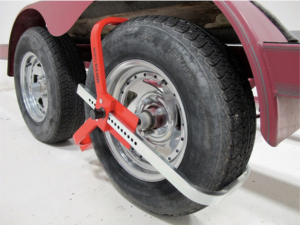 Wheel Lock:
Wheel Lock:
These work in many different ways, but the one pictured here covers the wheel, rendering it immobile. You can also purchase locks for the lug nuts themselves. Here’s a list of wheel locks from etrailer.com: they range in price from under $10 to $180.
GPS Tracker:
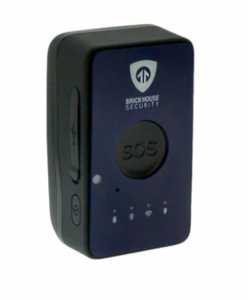 God forbid someone actually gets away with your tiny house, it would be easy to track if you have one of these in or on your tiny house. Hundreds of discreet GPS trackers are on the internet, and many are inexpensive enough to make the purchase worth the peace of mind you’d get from having one. The tracker pictured here, from Brickhouse Security (here are their best GPS trackers), is less than 2″ x 3″, so you can place it inconspicuously so a thief doesn’t know it’s there. You can track its location on your phone or computer.
God forbid someone actually gets away with your tiny house, it would be easy to track if you have one of these in or on your tiny house. Hundreds of discreet GPS trackers are on the internet, and many are inexpensive enough to make the purchase worth the peace of mind you’d get from having one. The tracker pictured here, from Brickhouse Security (here are their best GPS trackers), is less than 2″ x 3″, so you can place it inconspicuously so a thief doesn’t know it’s there. You can track its location on your phone or computer.
Security Camera:
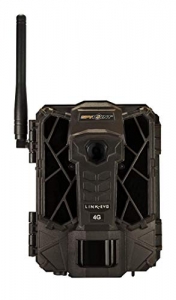
As the economy forces package thieves to become bolder and bolder, the market for home security has exploded, and security cameras are getting cheaper every year. Even if your security camera doesn’t prevent the most determined thief, it is certainly a theft deterrent. Some security cameras use motion detection to start recording a ten-second video; others record all the time.
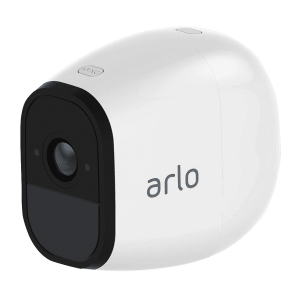
Security cameras that store the images and/or video inside them are only helpful after you recover the camera itself. A smarter choice is either a wifi-connected home security camera like Arlo or Nest, or a trail cam, which operates on cell data (you’ll have to pay monthly). Both a wifi-connected cam (here are PC Mag’s top picks for 2019) or a trail cam (here are Trail Cameras’ Reviews for 2018) allow you to see the images in near-real-time on your phone or computer.
Smart Home Security System:
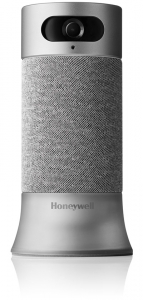 If a security camera isn’t enough, you can have a whole integrated security system in your tiny house, as long as your house gets constant power. Smart home security systems like Honeywell’s allows you to choose a la carte what features you’ll use, such as notifications when windows or doors are opened, motion light activation, facial recognition of those entering your house, and voice control with Amazon Alexa.
If a security camera isn’t enough, you can have a whole integrated security system in your tiny house, as long as your house gets constant power. Smart home security systems like Honeywell’s allows you to choose a la carte what features you’ll use, such as notifications when windows or doors are opened, motion light activation, facial recognition of those entering your house, and voice control with Amazon Alexa.
(Full disclosure– Honeywell’s not paying us to post this, but we did build a tiny house for them integrating their smart home tech, so we’re familiar with their technology and we like their brand).
Timed Lights:
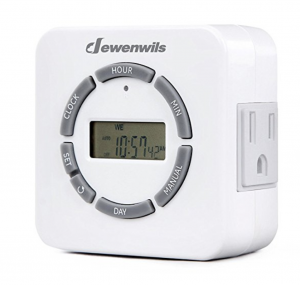
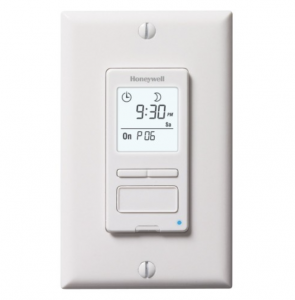
These lights are great for when you’re not at home but want to give the impression that someone is there.
The simplest and cheapest option is a light timer, which can either be plugged into a wall socket (this one’s by Dewenwills, pictured at left) or integrated into the light switch plate (this one’s by Honeywell, pictured at right). It turns a lamp or electric outlet on and off at a specific time or times every day. The mechanical ones make a clicking sound that will drive you nuts in a small space, so we recommend an electronic light timer.
Motion-Sensor or Remote-Controlled Lights:

Most people have been familiar with motion sensor lights for decades. Not only can they be a theft deterrent by attracting attention to the house when there’s movement, they can also increase the security of the tiny house dweller when coming home and fumbling for keys in the dark. Here’s The Spruce’s list of best motion sensor lights for different outdoor areas. Some of these contain the sensor within the bulb, so the bulb can be screwed directly into any light socket, which means you won’t have to do any wiring to make them work. Some of the lights on this list run on their own solar power which is nice for when your tiny house isn’t connected to a power system.
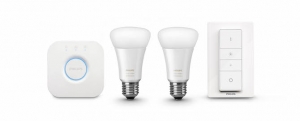
Like timed lights, remote controlled lights help create the illusion that someone’s home, but they’re a bit “smarter” in terms of going on either when they sense motion or when you decide to activate them from afar via your electronic device. Remote-controlled smart lights, for when you’re far away to your wifi-connected tiny house, allow you to turn on a light in your home via an app on your phone. Here are a couple ways to integrate smart lights from Make Use Of, whether your house hasn’t been built yet and you can install these during the building process, or you’d like to install plug-and-play smart lights in your exisiting tiny house. You can also get remote control of the lights in your tiny house by incorporating them into your existing smart home security system.
Neighbors:
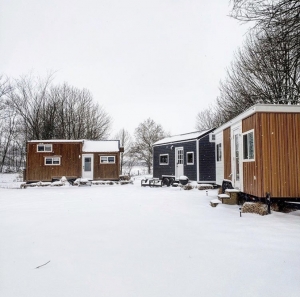 This one’s pretty simple: although not all tiny house owners are parked near neighbors, those who are and have a friendly rapport with them can ask their neighbors to keep an eye on their tiny house. Having possible witnesses close by is a major deterrent to break-ins and thefts.
This one’s pretty simple: although not all tiny house owners are parked near neighbors, those who are and have a friendly rapport with them can ask their neighbors to keep an eye on their tiny house. Having possible witnesses close by is a major deterrent to break-ins and thefts.
(Pictured: The Hoosic Tiny House flanked by two other tiny houses. Photo by Try It Tiny)
Location and Recognition:
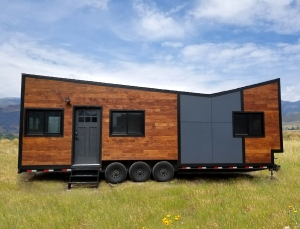 When choosing a location for your tiny house, from a theft deterrent standpoint, consider how easy it is for someone to get away with your tiny house. Anyone who’s ever towed a tiny can attest that tiny houses attract a lot of attention on the road. People peer out of their windows, take photos, post them on the internet. Whether you want to attract attention or not, it’s like being in a single-float parade.
When choosing a location for your tiny house, from a theft deterrent standpoint, consider how easy it is for someone to get away with your tiny house. Anyone who’s ever towed a tiny can attest that tiny houses attract a lot of attention on the road. People peer out of their windows, take photos, post them on the internet. Whether you want to attract attention or not, it’s like being in a single-float parade.
Likewise, if your tiny house is easily recognizable, it’s more easily recovered. An unusual looking tiny house can’t go as far and long without being reported.
Tiny House Anchoring:
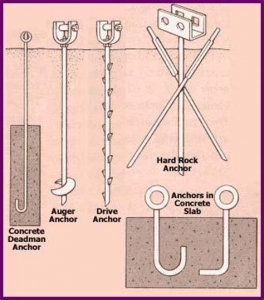 For those who do not travel with their tiny house, tie-downs aren’t just a good idea for theft deterrence. They’re also a great idea to keep the house from rocking or even lifting during a hurricane. Although one can remove the house from the anchors (with varying degrees of difficulty depending on which type of anchor you’re using), this takes time and is another way to deter theft.
For those who do not travel with their tiny house, tie-downs aren’t just a good idea for theft deterrence. They’re also a great idea to keep the house from rocking or even lifting during a hurricane. Although one can remove the house from the anchors (with varying degrees of difficulty depending on which type of anchor you’re using), this takes time and is another way to deter theft.
Additionally, building a porch onto the front of your tiny house not only expands your livable space in nice weather and creates a more welcoming entrance, it makes it more difficult for a thief to quickly steal your tiny house.
Tie-in to septic and sewer:
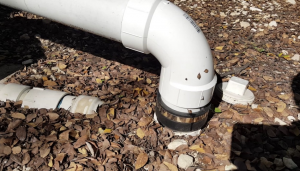 Like anchoring with tie-down straps, it’s not impossible to remove a septic or sewer tie-in, but it takes longer, requires tools and knowledge which means it takes longer to steal someone’s house. Of course, not all tiny houses stay in one location– they are on wheels, after all– but for those that do, this is a great option.
Like anchoring with tie-down straps, it’s not impossible to remove a septic or sewer tie-in, but it takes longer, requires tools and knowledge which means it takes longer to steal someone’s house. Of course, not all tiny houses stay in one location– they are on wheels, after all– but for those that do, this is a great option.
Image from My Camper Home on Youtube
Remove tires:
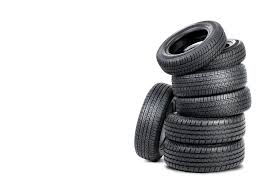 When the tires are removed, a thief can’t just hook up a tiny house to their truck and roll away with it. It takes time and tools to attach four or six tires to the wheels of a trailer: time that exposes a thief to witnesses.
When the tires are removed, a thief can’t just hook up a tiny house to their truck and roll away with it. It takes time and tools to attach four or six tires to the wheels of a trailer: time that exposes a thief to witnesses.
You can’t say for certain that your tiny house will never be broken into or stolen. However, the chances of that are very slim; you can make them slimmer by taking some of these simple precautions.
Silver Lake Tiny House in New Book
/in B&B Products, Features /by Rick PorcoLast year, Monsa Publications out of Barcelona asked us if they could feature our Silver Lake Tiny House in their new book: Tiny Mobile Homes: Small Space – Big Freedom. Of course, we said yes!
Today we received the book, and it’s beautiful. Thank you, Monsa!
Here’s a link to more info on the book.
What’s the Best Size Tiny House for Travel?
/in Lifestyle /by Rick PorcoTiny Houses on Wheels are sized for the road.
An 8 1/2 foot width is standard in tiny houses because that’s the maximum width that can safely travel down roads without an oversize permit. We also build some tiny houses on wheels 10+ feet wide as Park Model RVs and procure oversize permits in every state they’ll travel through to get to their destination. 10+ foot wide houses, of course, aren’t recommended as houses that will travel more than once.
While the length of tiny houses is variable (we’ve built everything from 16 feet to 32 feet) the height is also restricted by the road. 13 1/2 feet tall is the maximum, which means the ceiling can be just over 10 feet from the floor inside the tiny house. That’s why we can’t build a sleeping loft you can stand up in– unless you’re only two feet tall.
What size vehicle do you need to own to tow your tiny house?
You should have a vehicle with a towing capacity that exceeds the weight of your tiny house. This article will help you determine what towing capacity you’ll need based on the estimated weight of your tiny house.
It can be helpful to take lessons first.
If you don’t have experience towing, see if there are classes offered in your area before you set out on the road with your tiny house in tow. If you don’t want to take an entire course, have someone you know who’s experienced in towing give you a few pointers. Having someone watch what you’re doing in-person is more helpful than YouTube videos, because they can tell you what you’re doing wrong and right.
Shorter tiny houses are lighter.
We recommend a house up to 24 feet long for towing. Anything larger (or heavier) gets unwieldy for travel. (We can still build a bigger house if you’re not planning on traveling with it!)
If you don’t want to tow your house, hire a professional.
There are companies that do this all day, every day so you don’t have to. If you’re only moving your house once, it may be best to leave the towing to the pros. If you’re on the east coast, email us at info@bbtinyhouses.com for a towing company recommendation.
B&B Micro Manufacturing, Inc. is honored with an AIM Next Century Award
/in Features /by Rick Porco
We are thrilled and humbled to be one of the twelve organizations honored by Associated Industries of Massachusetts with a 2018 AIM Next Century Award.
“AIM created the Next Century Award to honor the accomplishments of companies and individuals creating a new era of economic opportunity for the people of Massachusetts. These remarkable people and institutions – world leaders in their fields – inspire the rest of us by exemplifying the intelligence, hard work and dedication to success that has built our commonwealth,” said Richard C. Lord, President and Chief Executive Officer of AIM.
We couldn’t have accomplished as much as we have without our team of talented, driven craftspeople; our customers who continuously push our creativity to new heights; and the support of the many individuals and entities in the Berkshires, particularly here in North Adams, who have helped us grow over the past two years.
The regional celebration was held at the gorgeous Hotel on North in Pittsfield. Alongside Canyon Ranch in Lenox, we received the Next Century Award, while Pittsfield’s Berkshire Sterile Manufacturing received the Sustainability Award, given by Associated Industries of Massachusetts.
We’re pleased and humbled to be honored along with twelve other businesses and organizations across the state of Massachusetts for our “unique contributions to the Massachusetts economy and the well-being of the people who live there”.
A Look Inside B&B’s Resideo Tiny Smart Home with Honeywell Home Tech
/in B&B Products /by Rick PorcoWe’ve built a Tiny Smart Home using tech from Resideo, Honeywell‘s new spinoff which goes public today.
The Tiny Smart Home is right outside the New York Stock Exchange where Resideo rang the bell this morning, showing off Resideo’s smart home technology.
“As Resideo rings in a new era as an independent company and begins trading on the New York Stock Exchange, the company is hosting a pop-up experience outside the iconic Financial District landmark to display its top-notch, easy-to-use solutions. The mobile technology showcase is the brain child of Resideo and news-outlet Cheddar, who are joining forces to highlight the intersection between smart home technology and simple living. The Resideo Tiny Home, built by B + B Tiny Houses, serves as the backdrop of a new Cheddar show, which will launch later in 2018 and highlight Honeywell Home’s end-to-end, integrated home solutions on the exterior, on the wall, in the wall and in the cloud.
The 125 square-foot home features Honeywell Home’s professionally installed options, which were slightly modified for the small space, and are available through professional HVAC contractors and home automation and security dealers (through Resideo’s ADI Global Distribution business). The home also includes DIY solutions found at major retailers and www.Honeywellhome.com. The solutions are controlled via simple voice commands or Honeywell Home apps, make the home smarter, cozier, safer, and more efficient.” –resideo.com
If you’re near Wall Street check out our Tiny Smart Home with Resideo technology! If you’re not near Wall Street, this tiny house will soon be traveling the nation– keep up to date on its whereabouts on Residso’s Twitter or Facebook!
Click the images to enlarge:
Learn More about “The Tiny Home On Wall Street” in this article by Resideo.
Watch the video of B&B co-founder Jason’s interview about Building The Smart Tiny Home on Cheddar TV.
10 Must Have Kitchen Appliances in Your Tiny Kitchen
/in Design, Lifestyle /by Rick Porco10 Must Have Kitchen Appliances in Your Tiny Kitchen
Tiny living doesn’t mean you have to sacrifice the ability to make delicious home cooked meals. Below are some neat appliances that can make cooking easier and more fun!
1. All-in-One Crock Pot
These bad boys are able to slow cook, pressure cook, steam, and saute your food. No oven required for delicious meals!

2. Food Steamer
Steamers are easy to clean, healthier as they don’t require oil, allow you to cook all your dinner items at the same time, and require very little supervision.
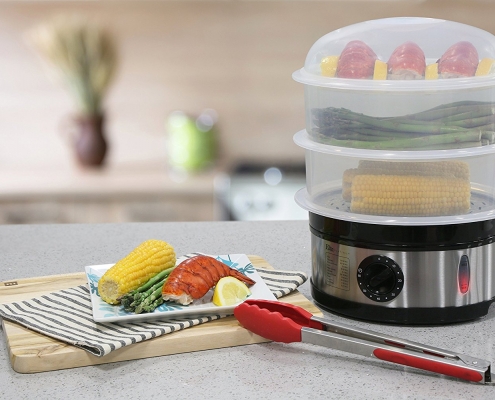
3. Rapid Egg Cooker
These small egg cookers can serve you poached, scrambled, hard boiled eggs, and omelets in no time. And now time for an egg pun…What does a meditating egg say? Ohmmmmmmmlet.
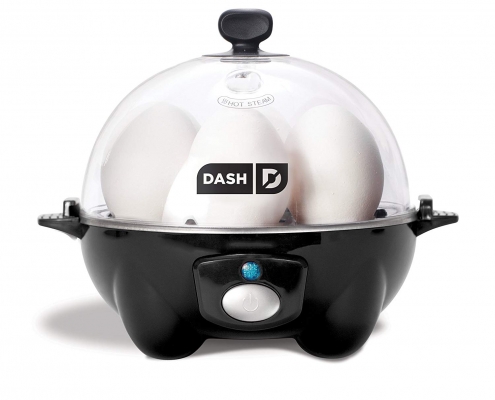 4. Ice Maker
4. Ice Maker
This ice maker can make ice cubes in 6 minutes and will make up to 26 pounds of ice daily.
5. Single Serve Blender
Yummy smoothies are quick and fast with this single serving blender that features one bottle for blending and drinking.
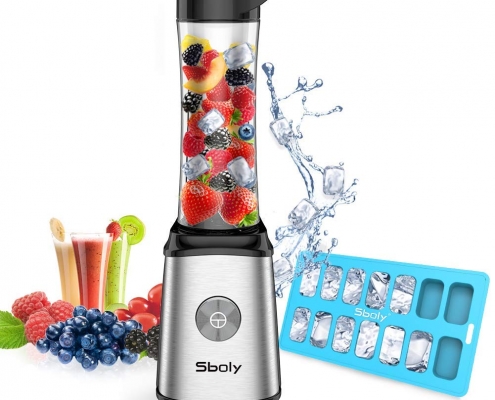 6. 3-in-1 Breakfast Station
6. 3-in-1 Breakfast Station
Simultaneously make coffee, pancakes, eggs, toast, and sausage. This is a dream come true!
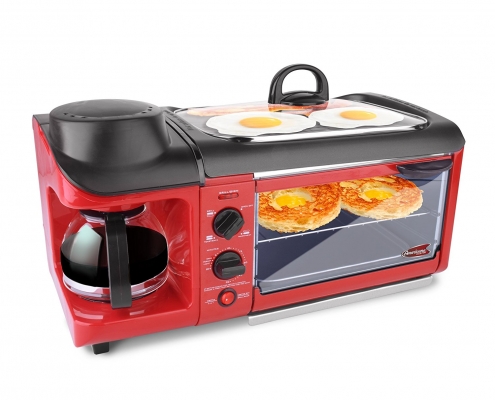 7. Breakfast Sandwich Maker
7. Breakfast Sandwich Maker
Finally a fool-proof way to make a circular egg for your breakfast sandwich.
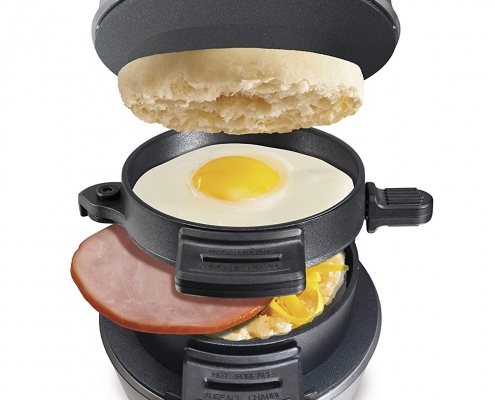 8. Gridler
8. Gridler
Bring the grill indoors with this space-efficient appliance.
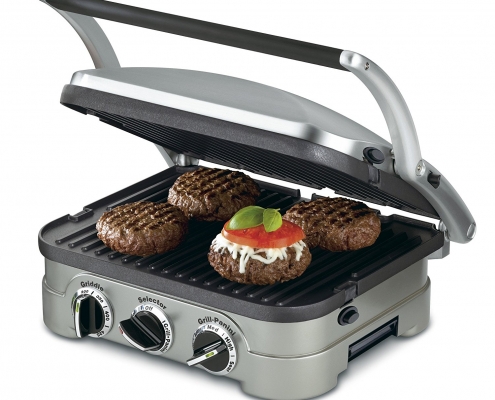 9. Pizza-Maker
9. Pizza-Maker
Pizza is unarguably the best meal on the planet.
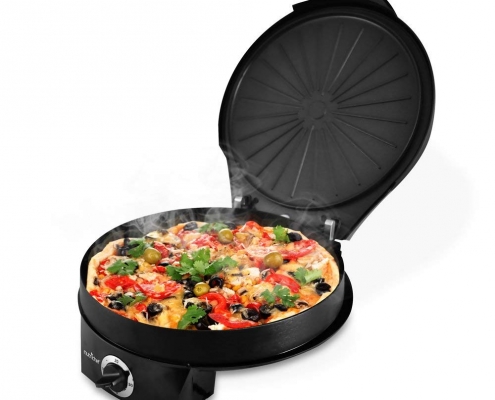
10. Kitchen Herbs
Plant these herbs in pots and put them right below your kitchen window for a green touch and delicious dishes.

B&B Tiny House Kitchens
How To Get Started
Learn more about our process or fill out the form below and one of our tiny house experts will reach out to you.

